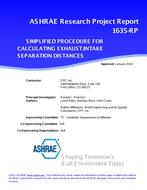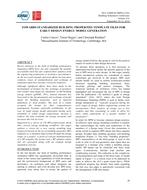The design of vertical ground-coupled heat pump (GCHP) systems requires an accounting of the amount of heat rejected and extracted over an extended period. ASHRAE 1120-TRP revised the concept of equivalent full-load hours (EFLHs) as an alternative to a more elaborate energy analysis. This paper applies results of this project to study the impact of the recommended values with over- and underestimated EFLHs in three climates for three different building types.
Results indicate the required design length for a vertical GCHP system can be substantially affected by the annual imbalance of heat rejected to and absorbed from the ground in nonporous formations. The impact is reduced for porous formations. Overestimation of the annual cooling energy by 50% resulted in increases in required lengths of 4% to 15% for nonporous formations. Overestimation of the annual heating energy by 50% resulted in a 13% increase in required length in Minneapolis and minimal change in St. Louis and Atlanta. The impact of bore-to-bore separation in nonporous formations is significant, and designers should weigh the option of increasing this value beyond 20 ft (6 m) in warm climate, high cooling load applications. Finally, the accuracy of determining EFLHs using ASHRAE 1120-TRP results is sufficient to perform GCHP system design, since gross errors (±50% and +100%) result in much smaller errors in required ground loop lengths.
Units: Dual
Citation: ASHRAE Transactions, vol. 109, pt. 1
Product Details
- Published:
- 2003
- Number of Pages:
- 6
- File Size:
- 1 file , 570 KB
- Product Code(s):
- D-16790


